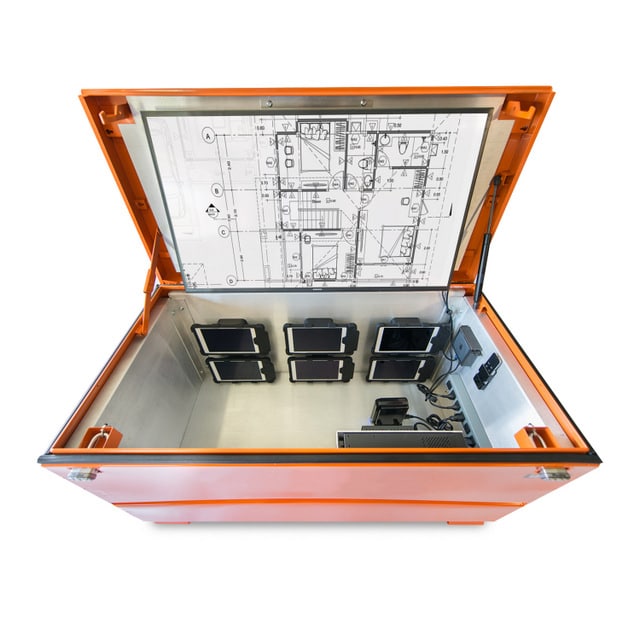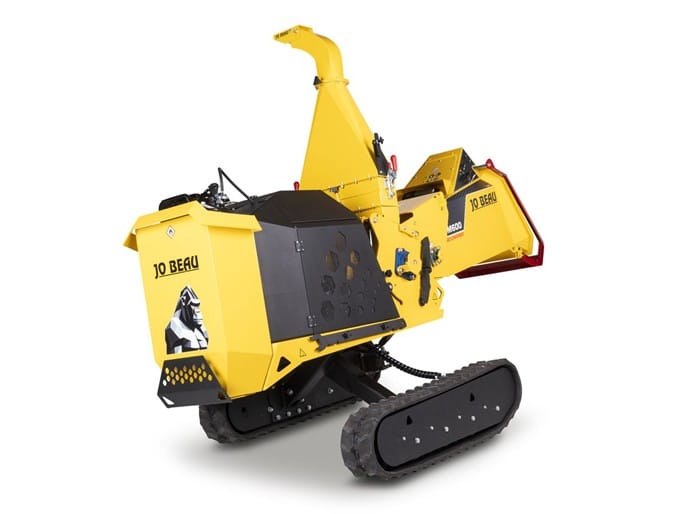Dig this Digital Job Box that Connects Remote Workers with the Office
 The Digital Job Box starts with a heavy-duty locking steel job site storage box, outfitted with marine-grade power outlets for connection to commercial power. Inside, the Job Box includes iPads with cellular connectivity (6- or 10-unit configurations) with magnetic mounted ruggedized cases that use powerful induction to charge, no cables to worry about, an uninterruptible power supply to keep you working, and a large 4K display for collaboration, powered by Apple TV. The Digital Job Box can also be enhanced with additional accessories such as printers, drones, safety sirens/strobes, and a mobile Wi-Fi hotspot.
The Digital Job Box starts with a heavy-duty locking steel job site storage box, outfitted with marine-grade power outlets for connection to commercial power. Inside, the Job Box includes iPads with cellular connectivity (6- or 10-unit configurations) with magnetic mounted ruggedized cases that use powerful induction to charge, no cables to worry about, an uninterruptible power supply to keep you working, and a large 4K display for collaboration, powered by Apple TV. The Digital Job Box can also be enhanced with additional accessories such as printers, drones, safety sirens/strobes, and a mobile Wi-Fi hotspot.
Available with the Digital Job Box is a fully managed service offering that includes integration, deployment, PCM-hosted mobile device management with Mobile Iron, monthly updates, help desk, and an advanced depot replacement service. The mobility experts at PCM will integrate all accessories and activate the devices, enrolling them in Apple’s Device Enrollment Program.
By utilizing a hosted and managed instance of Mobile Iron, PCM will configure all devices to adhere to a company’s corporate policies, and will push out apps, content, and updates to each device over the air. If support is needed or a device is damaged, PCM’s Apple-certified help desk is ready to assist with troubleshooting or setting up an advance replacement repair. At the project close, PCM offers a variety of options including warehousing, re-deployment to a new job site, or trade in.
Additional Features
Procore Technologies, Inc. released fully redesigned apps for the iPad and iPhone, which can be accessed via PCM’s Digital Job Box. The iOS features allow the ability to drag and drop photos and documents, multitasking, and improved tools for drawings and RFI creation. These apps help transform the jobsite, giving workers the ability to collaborate in real-time with both on-site employees, as well as those in the field and in the office anywhere in the world.
Pricing on PCM’s Digital Job Box solution begins at $12,500 for a Job Box with six cellular-enabled iPad devices. Monthly managed services are available for $25 per month per device, paid annually. Companies can lease the entire managed solution for 24 months for as low as $614/month.





Comments are closed here.